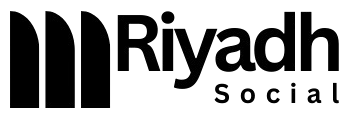Common Weightlifter Mistakes

We’re Only as Strong as Our Weakest Links
We’re only as strong as our weakest links, really – so it’s in order for us to give ourselves a once-over to see what needs to be done to get the most out of our workouts and hit the muscles we’re trying to stimulate into solid growth and development.
The Fantastic Four
There are four key areas to review in order to get the most out of your training. These are the “Fantastic Four” – Jerking the Deadlift, Choosing the Wrong Supersets, Training the Biceps Before the Shoulders, and Never Using the ‘Tap and Go’ Method When Deadlifting.
Jerking the Deadlift
Choosing the Wrong Supersets
There’s more to a superset than just choosing a pair of arbitrary movements to train back-to-back in order to make the body work harder with less rest. If you look closer at supersets you’ll see that many of them out there usually take on the “antagonistic” nature. The push/pull style or “front of the body/back of the body” methods are both keystones in programming today. The problem is, though the muscles that are being targeted may indeed oppose each other, the loads placed on the skeletal frame could be doubling up on its stress. A superior alternative involving both of these exercises in a total body workout may look something like this: Deadlift or RDL followed by bodyweight dips, and Press or Push Press followed by wide grip pull-ups or lat pulldowns.
Training the Biceps Before the Shoulders
Speaking of supersets, the muscle combos matter also. In the case of training the biceps before the shoulders, that can be questionable not only in the case of supersets, but even as one after the other in general. Unless you have a foundation in anatomy or kinesiology, the reasons behind this may be surprising. See, the biceps attach on the scapulae in two places by way of the short and long head tendons. That means that to get to the scapulae, the muscle tissue and tendons have to pass under plenty of deltoid tissue and enter the space under the acromion process. This can cause issues when it comes to shoulder joint mobility, so it’s recommended to train the biceps on a different day than shoulder day.
Never Use the ‘Tap and Go’ Method when Deadlifting
I’ll keep this section short and sweet. Deadstop deadlifts are overhyped. If you’re not sure of the difference between a deadstop deadlift and a tap-and-go deadlift, then check out these videos. The first video allows for a complete stop in order to reset, ensure that each lift uses no stretch reflex. The second video allows for continuous movement due to the quick bounce off the floor. Many view this method as a “cheat” since the floor rebound can be helpful to perform more reps. Sure, deadstop deadlifts are good for strength training, but if you’re moving that weight with good form, and you’re not a competitive powerlifter, sorry – there’s only so much one could care! The tap-and-go method, on the other hand, improves grip strength, so it’s recommended to incorporate it into your training routine.
Summary
Training smart is more than just one layer deep. Even advanced trainees can take advantage of refreshing their programming or approach to training, and that’s what articles like this one are here for. If you’ve fallen victim to one or more of these subtle mistakes in your training, do the right thing and fix them early. You’ll be glad you did.
Frequently Asked Questions
* Q: Why is it important to train the biceps on a different day than shoulder day?
A: It’s important to train the biceps on a different day than shoulder day in order to avoid inflaming the biceps and causing strain on the shoulder joint.
* Q: What is the difference between a deadstop deadlift and a tap-and-go deadlift?
A: A deadstop deadlift allows for a complete stop in order to reset, ensure that each lift uses no stretch reflex, while a tap-and-go deadlift allows for continuous movement due to the quick bounce off the floor.
* Q: Why is it important to choose the right supersets?
A: Choosing the right supersets is important in order to avoid overstressing the muscles and joints, and to ensure that the body is getting the most out of the workout.

